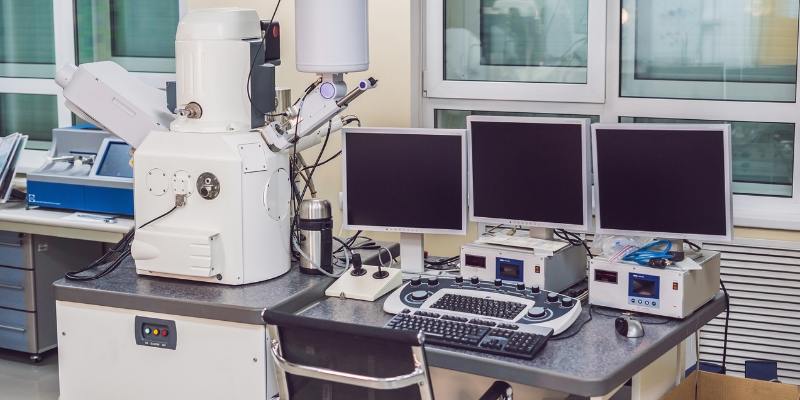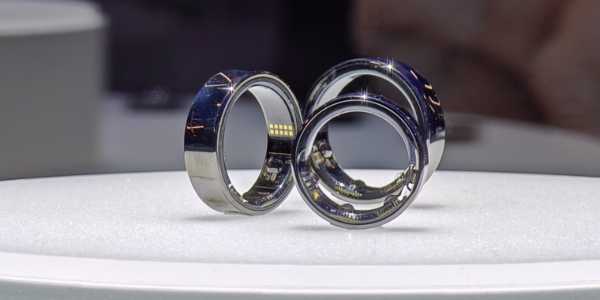- Electronics
Electron Microscope: Key Features, Types, and Their Costs
When you hear the term "electron microscope," what comes to mind? You may think of scientific research, groundbreaking discoveries, or futuristic technology. But what exactly makes an electron microscope unique, and how much does it cost?
In this article, we will discover the key features of electron microscopes, their various types, and their price.

What Is An Electron Microscope?
An electron microscope (EM) is a powerful imaging device that views objects at a much higher resolution than light microscopes. Unlike light microscopes, which use visible light, electron microscopes employ an electron beam to magnify things. This allows them to magnify specimens to levels far beyond what traditional light microscopes can achieve.
Electron microscopes are primarily used in scientific research, medicine, material science, and other fields where fine details at the cellular or molecular level are necessary.
Key Features Of Electron Microscope

1. Resolution And Magnification
One of the defining features of an electron microscope is its ability to achieve extremely high magnification and resolution. While a typical light microscope may offer magnification up to 1,000x, an electron microscope can magnify specimens up to 10 million times. This makes them invaluable for studying the fine details of cells, viruses, or even individual atoms.
2. Electron Beam Technology
The electron beam in these microscopes is highly focused and controlled, allowing it to scan a specimen. This beam interacts with the specimen in such a way that it produces an image based on how the electrons scatter off the material. This process provides incredibly detailed and accurate photos, revealing structures that would otherwise be invisible.
3. 3D Imaging Capabilities
Some advanced electron microscopes have 3D imaging capabilities, allowing researchers to capture three-dimensional images of specimens. This technology enables a more comprehensive analysis, particularly in materials science and nanotechnology.
4. Sample Preparation
Electron microscopes require samples to be prepared in specific ways to prevent them from being damaged by the electron beam. This preparation can involve coating the sample with a thin layer of conductive material or using cryogenic techniques to preserve the sample's structure.
Types Of Electron Microscopes
There are several types of electron microscopes, each suited to different applications.
1. Transmission Electron Microscope (Tem)
The TEM is the most common type of electron microscope used for observing thin slices of specimens. In a TEM, electrons pass through the specimen, and the image is produced by detecting the electrons that come through. This allows for highly high-resolution images of internal cellular structures and other microscopic details.
2. Scanning Electron Microscope (Sem)
SEM uses a scanning electron beam to image a specimen's surface. Unlike TEM, SEM provides detailed 3D images of the surface, making it ideal for analyzing materials' texture, structure, and morphology.
3. Scanning Transmission Electron Microscope (Stem)
The STEM combines TEM and SEM elements, allowing researchers to scan a sample's surface and analyze its internal structure simultaneously. This type of electron microscope is beneficial for materials science and nanotechnology.
4. Focused Ion Beam (Fib)
Though technically not always categorized as an electron microscope, FIBs use a focused beam of ions to precisely mill and image samples. They are often paired with electron microscopes to analyze and manipulate tiny-scale materials.
Costs Of Electron Microscopes
1. Price Range
The price of an electron microscope varies widely depending on the type and its specific capabilities. Entry-level or older scanning electron microscope (SEM) models can cost anywhere from $100,000 to $300,000, while high-end TEMs and more advanced models can exceed $1 million.
Refurbished or used electron microscopes are available for researchers or institutions on a budget. These can cost between $50,000 and $200,000, but the condition of the microscope should be carefully evaluated to ensure that it meets the required performance standards.
2. Operating Costs
Operating an electron microscope involves ongoing costs in addition to the initial purchase cost. These include maintenance, calibration, and the cost of consumables like sample preparation materials. Many institutions and universities also factor in the price of training personnel to operate these specialized machines.
3. Costs For Research And Medical Labs
The costs can add up even further for commercial applications, such as research or medical labs. The overall cost, including energy consumption, maintenance contracts, and equipment handling labour, should be carefully considered.
How To Choose The Right Electron Microscope For Your Needs?

When purchasing an electron microscope, it's essential to consider your specific requirements. Key questions to ask include:
• What type of specimens will you be studying?
• How much magnification and resolution do you need?
• Do you require 3D imaging capabilities?
• What is your budget?
Choosing the right electron microscope depends heavily on the type of research or work you plan to do. Understanding the differences between TEM, SEM, and other types will help you select the one that best suits your needs.
Conclusion: Choosing The Right Equipment For Your Research Needs
When considering an electron microscope purchase, evaluating your specific needs, such as the type of research and required magnification, is essential. The cost of these advanced tools can be significant, ranging from $100,000 to over $1 million, depending on the model and capabilities. However, investing in a high-quality microscope can provide invaluable insights into the microscopic world.
By selecting the right microscope for your research, you can maximize your investment and gain access to the cutting-edge technology needed for groundbreaking discoveries.





